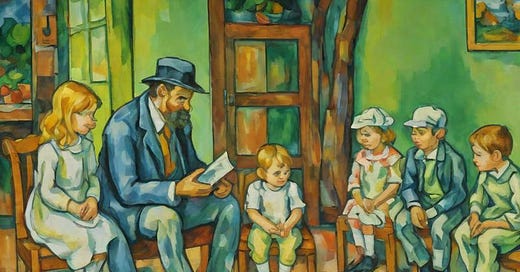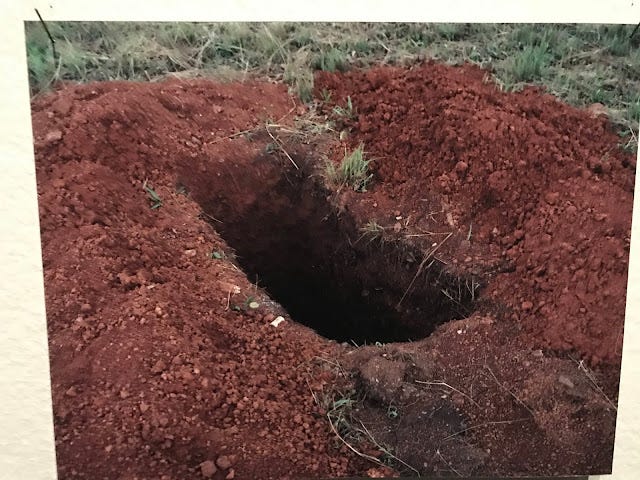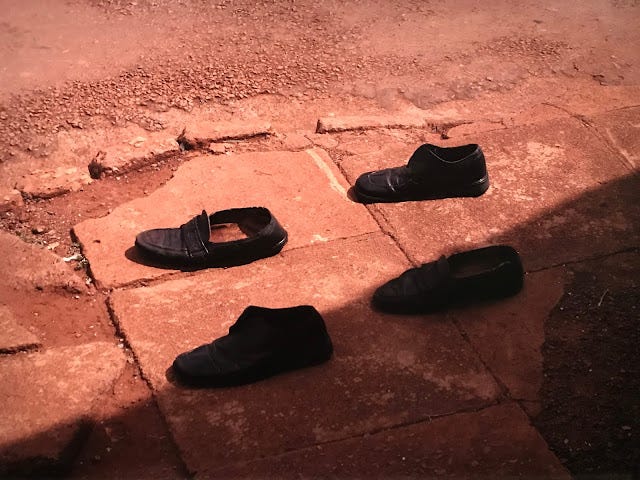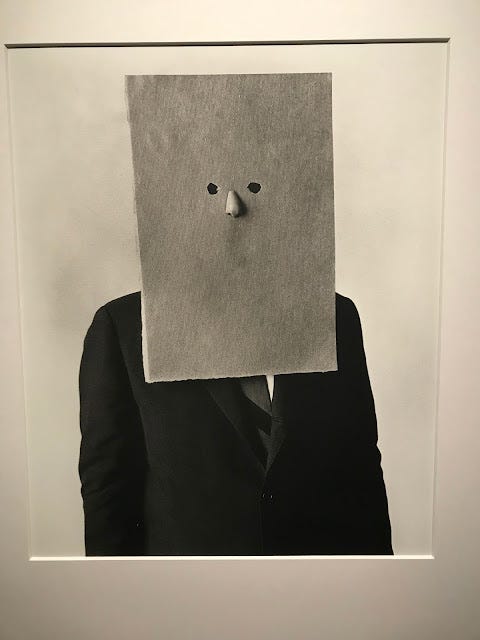The idea is to use the photographs to stimulate dialogues with children... so these posts are not going to be long... just some images and some questions to get dialogues started and some suggestions as how play and playful activities can deepen dialogues if you then return to the same photos and talk about them again. This is something that I have done many times. And this will be the first in a series of posts that will be available to paid followers - as this is very different from my usual writing.
These posts will not be recorded. BUT in the paid section I might respond to some questions through short films.
This post has three photographs - two from the Viviane Sassen and one from the Irving Penn. There are more questions than you need. I have written many so that you can choose, but also so that you have follow up questions, but I recommend that you also take the time to consider what possible follow up questions you might need. And also think about what possible answers the children might give… and if you are not comfortable with the idea of exploring those answers, then please choose a different photo, so that the philosophy dialogue can continue.
At the weekend I will share a post about philosophy with children here on substack, available to everyone.
Viviane Sassen
Why do you think there is a hole there?
Who or what made the hole? How do you know?
Where do you think the hole may lead you to?
Would you want to go into this hole?
What do you think is at the bottom of the hole?
What would you do with what you found there?
activities to proceed.
Dig their own holes... how deep can they go? What shape hole can they make. Is it easier to dig in the earth or sand? Maybe a treasure hunt if the children mention treasure? Explore animals that live in holes or dig holes. Explore different utensils for digging (even tools not designed for digging). The answers the children give will direct how you can proceed.
Viviane Sassen
Who left their shoes here?
Why did they leave them?
Why are they left like that?
Do you think they will come back for the shoes?
activities to proceed
get the children to create art with their shoes... arrange them and then take photographs.
mix all their shoes up... can they put them back into pairs... can they find their own again.
feel the difference between sun heated ground and shade
make footprint paintings... this can be done barefoot or with shoes on
explore the sound of shoes on wood, on carpet, in a space that echoes etc... use different kinds of shoes so that they will make different sounds, record the sounds and then let the children later try and match the sound of the shoe with the actual shoe.
design activities to meet the answers and thoughts the children have... make up a story together about what happened and illustrate it.
Irving Penn
Why do you think the person is wearing this?
Why is this person only showing their nose? (this is a photograph of a man, but it can be interesting to let the children explore and decide themselves if it is male or female, and why the think it is that gender)
Do you think this person is happy or sad? Why? How can you tell?
What colour do you think the mask is? Why do you think that?
activities to proceed.
The children make their own nose masks. Take photographs of them. Can they guess who everyone is behind the mask from the photographs? Ask them to have different expressions behind the nose mask... happy, sad angry etc... and see if the other children can guess what it is... does the body give away the language of emotion... or do you need to see the whole face? Maybe the nose is expressive sometimes?
Think about whether or not you are going to let the children choose the colour of the paper... this would make identification easier in one of the above activities... maybe then you could print out photographs in black and white so that the children can see what happens to "their" colour... is it as easy to guess who is who... or what colour is what?
create activities based on the children's reflections.








I'm wondering whether it would be advantageous for older siblings - or classrooms one grade level higher - to take random photos, then select one to share in philosopher-pairs. Or those taking photos could gift each to a younger child without comment. My family child care business in the '90's was inherently mixed-age, and this happened often with all sorts of serendipitous, bi-directional mentoring (a 'younger' initiating provocations for an 'older' child or one who was new to my home).
What fascinating questions and ideas to go with these fascinating photos! I'm sure this will inspire people to start looking for their own interesting photos to use with children! Thank you!